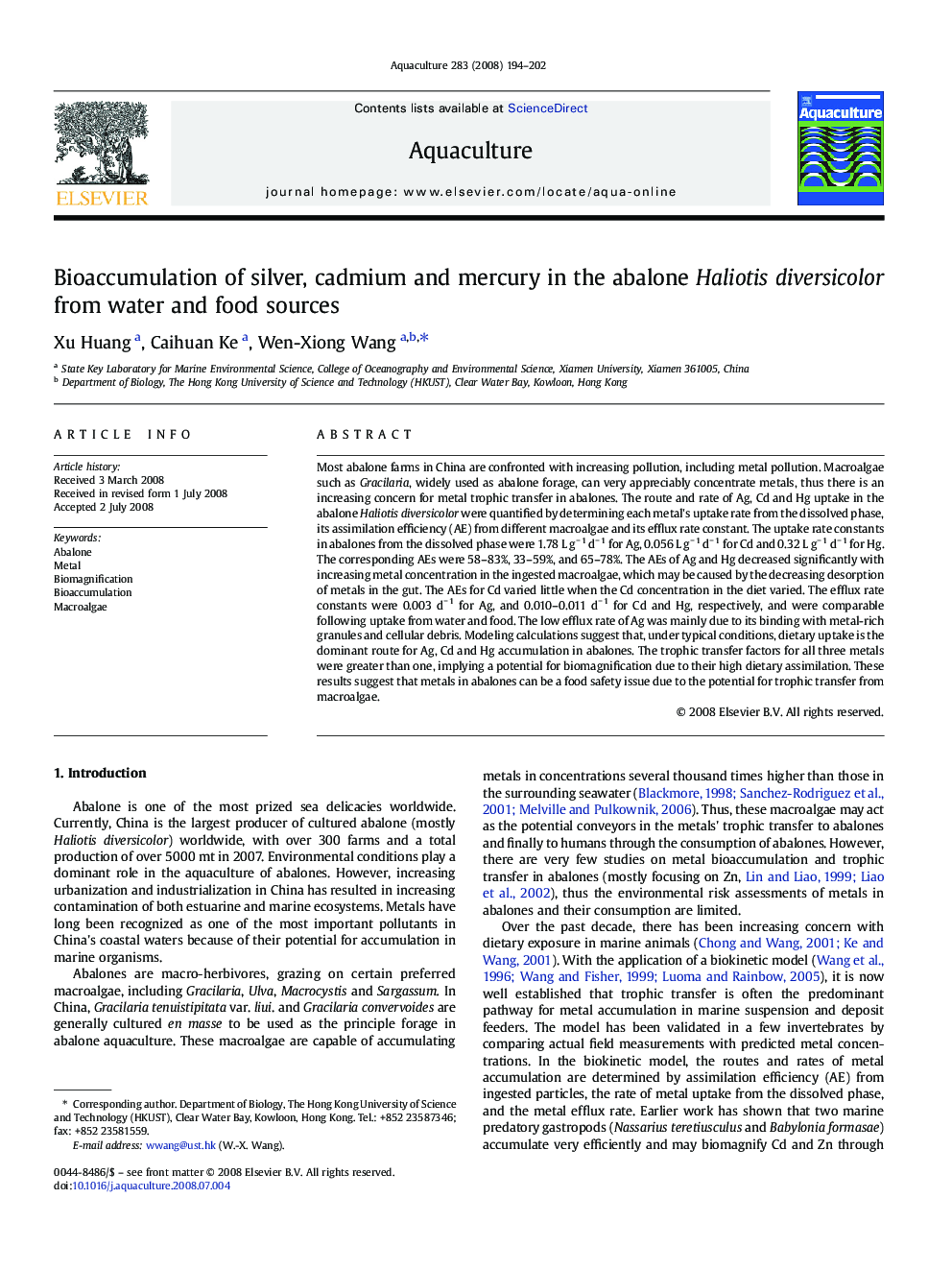| کد مقاله | کد نشریه | سال انتشار | مقاله انگلیسی | نسخه تمام متن |
|---|---|---|---|---|
| 2424496 | 1552958 | 2008 | 9 صفحه PDF | دانلود رایگان |

Most abalone farms in China are confronted with increasing pollution, including metal pollution. Macroalgae such as Gracilaria, widely used as abalone forage, can very appreciably concentrate metals, thus there is an increasing concern for metal trophic transfer in abalones. The route and rate of Ag, Cd and Hg uptake in the abalone Haliotis diversicolor were quantified by determining each metal's uptake rate from the dissolved phase, its assimilation efficiency (AE) from different macroalgae and its efflux rate constant. The uptake rate constants in abalones from the dissolved phase were 1.78 L g− 1 d− 1 for Ag, 0.056 L g− 1 d− 1 for Cd and 0.32 L g− 1 d− 1 for Hg. The corresponding AEs were 58–83%, 33–59%, and 65–78%. The AEs of Ag and Hg decreased significantly with increasing metal concentration in the ingested macroalgae, which may be caused by the decreasing desorption of metals in the gut. The AEs for Cd varied little when the Cd concentration in the diet varied. The efflux rate constants were 0.003 d− 1 for Ag, and 0.010–0.011 d− 1 for Cd and Hg, respectively, and were comparable following uptake from water and food. The low efflux rate of Ag was mainly due to its binding with metal-rich granules and cellular debris. Modeling calculations suggest that, under typical conditions, dietary uptake is the dominant route for Ag, Cd and Hg accumulation in abalones. The trophic transfer factors for all three metals were greater than one, implying a potential for biomagnification due to their high dietary assimilation. These results suggest that metals in abalones can be a food safety issue due to the potential for trophic transfer from macroalgae.
Journal: Aquaculture - Volume 283, Issues 1–4, 1 October 2008, Pages 194–202